How a YA teen Joker pitch turned into a Hannibal-esque take on the Harley Quinn / Joker dynamic
Joker/Harley: Criminal Sanity reimagines their epic relationship ala Silence of the Lambs

We often see the Joker through the eyes of superheroes, but what does he look like from the perspective of a real-life crime expert, like an FBI profiler? Less superhero, more Hannibal? That recently happened in a DC mature-readers series called Joker/Harley: Criminal Sanity.
And it all started as a YA teen Joker book. As you can imagine, it got dark really quickly.
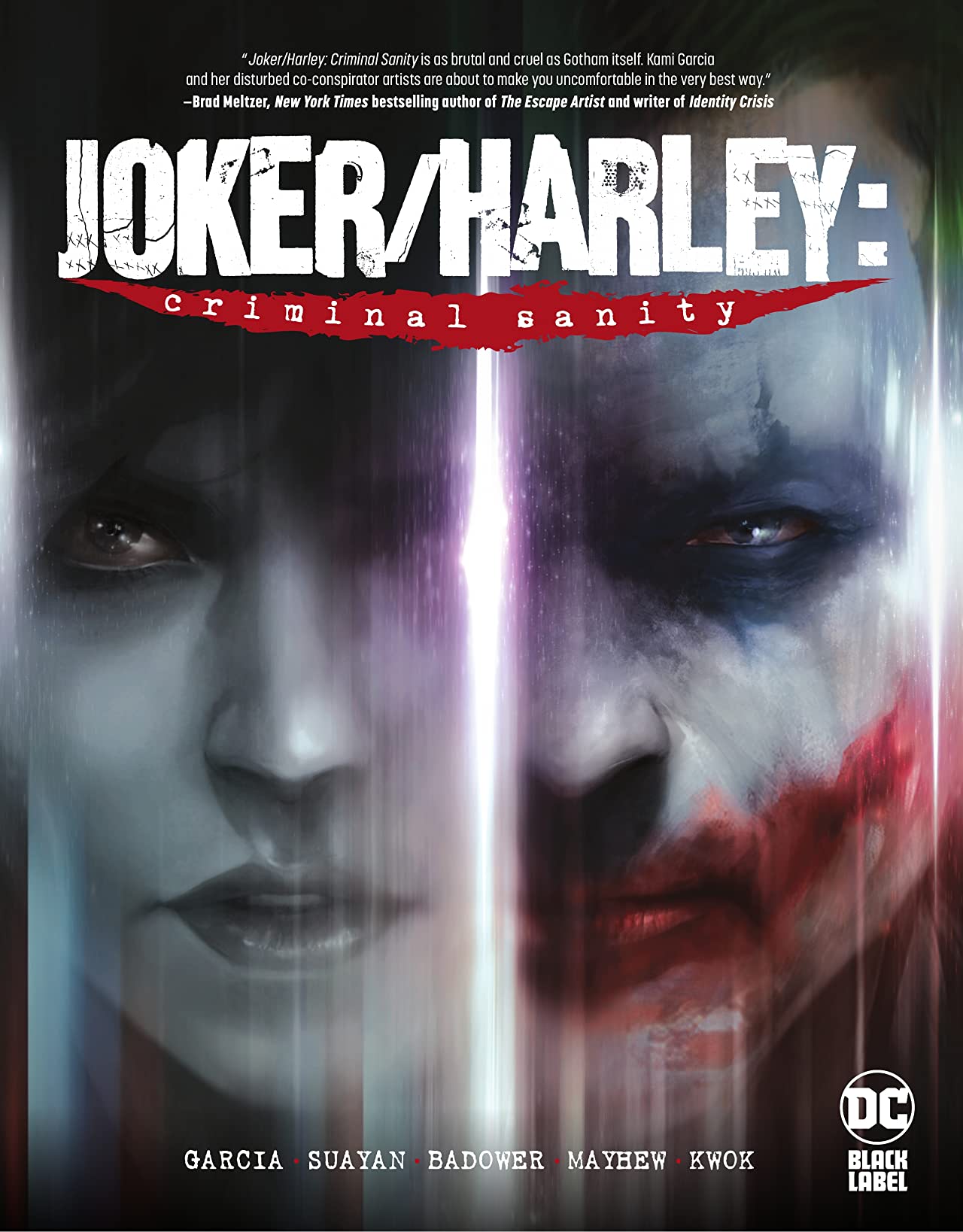
In Joker/Harley: Criminal Sanity, prose novelist Kami Garcia partnered with artists Mico Suayan, Mike Mayhew, and Jason Badower to hunt a serial killer Joker - and for it, they used psychologist Harleen Quinzel - and transformed the traditional Joker/Harley dynamic from being a romance gone wrong to Harley being an abuse survivor becoming a forensic psychologist to catch serial killers.
To continue a previous analogy, this Joker is to Hannibal as Harley is to Clarice Starling from Silence of the Lambs.
Garcia, who has written numerous crime novels, partnered with a real-life forensic psychologist/profiler to get a real look at what the Joker would be like as a real-life serial killer, and the kind of person Harley would have to be to catch him.
Newsarama: Kami, you wrote this series with a mind to really establish Harleen Quinzel as a legitimate forensic psychologist/profiler, and you even brought in a real-life one to consult with you, Doctor Edward Kurz. Why do you think in this case leaning into the implied realism helps with the story?

Kami Garcia: At its heart, Joker/Harley: Criminal Sanity is a psychological thriller with procedural elements. What I really wanted to explore is Joker as a terrifying figure, rather than a 'larger than life' pop culture figure. To me, he can go toe-to-toe with Hannibal Lecter, so I wanted to play on this idea of a very sane killer - an organized psychopath. The idea that this guy could be hunting, looking for prey at night when you're leaving a store, and could be out there at large; like the Zodiac Killer and other real serial killers in the US in the last several decades. When there is a real killer preying on the public, FBI behavior analytics help police narrow their search.
Get the best comic news, insights, opinions, analysis and more!
Harley Quinn has always been an intelligent, formidable character, and I wanted to hold on to her survivor elements and the touchstones other women relate to. BUt instead of being the survivor of an abusive relationship, in Criminal Insanity she's the survivor of an abusive mother so we could see her in her professional story doing things she'd never done if not in a romantic relationship. Redefining what she survived here retained the elation and intention of it, but changed it not to be in a romantic context.
Newsarama: Your depiction of Harley in Criminal Sanity reminds me of Clarice from the Hannibal novels, popularized in the Silence of the Lambs film. And with that, Joker being Hannibal Lecter - a reference you mentioned earlier.
Kami Garcia: When I brought this idea to DC initially five years ago, I framed it as it felt like Mindhunter and Hannibal - something really real and gritty. When Mico Suayan's name first came up as an artist, I really wanted to have him.
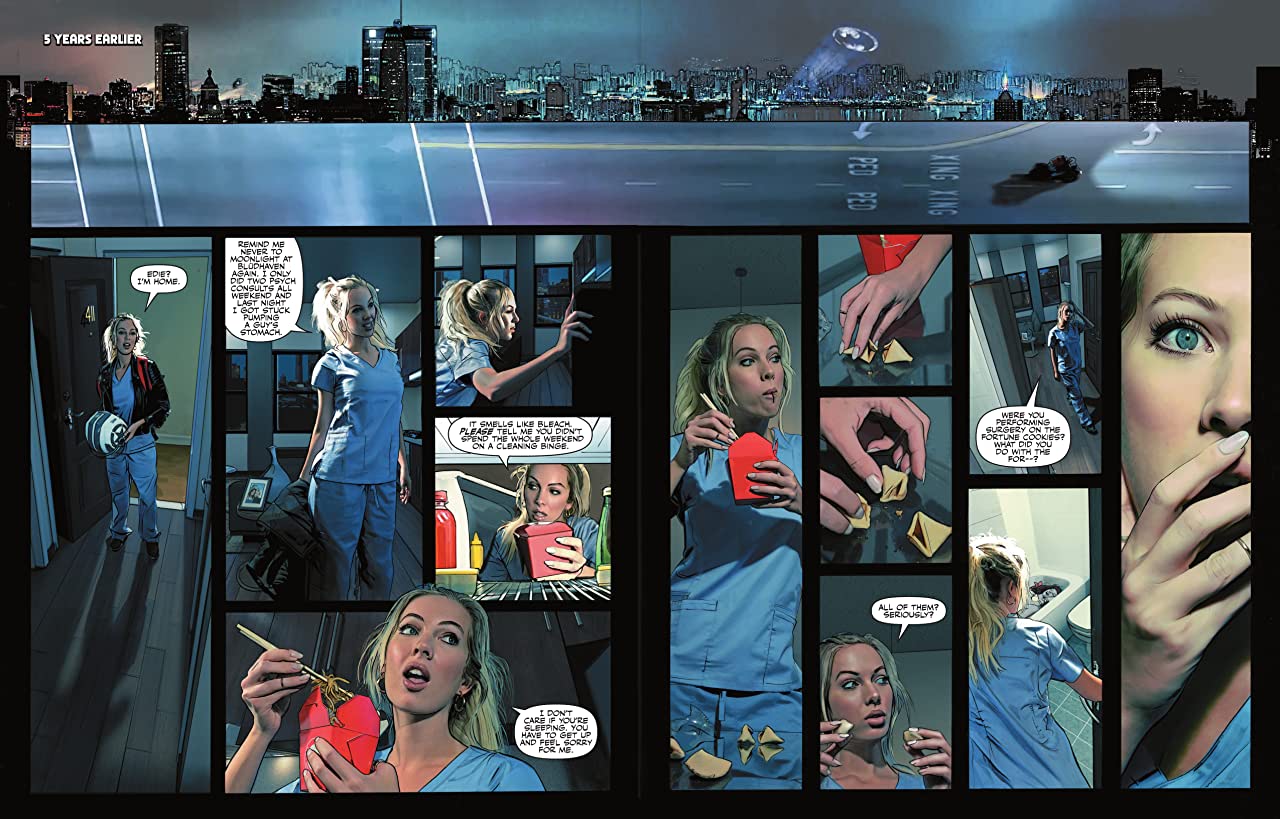
Once he came on board, we were talking about our goals for Joker/Harley: Criminal Sanity, and I brought up his work on Werewolf by Night; although that was horror, I told him what I was really going for is a sophistication like Hannibal - and he agreed.
With Hannibal, what's interesting is that the murder scenes are obviously gross, but also remarkable looking; so intricate, so sophisticated, throughout. That's what you get from soemone organized, not insane. Something of a hunter; he's out there, preying, not because he's crazy or fighting mental illness, but what he wants to. There's a rationale to it.
That's what I really wanted to show, and that it made the Joker even more frightening. There's been different itteratiosn fo the Joker, but my favorite ones always have him as cunning and smart - like Batman, but going down a different path.
Newsarama: How do you think the comics format influenced your depiction of forensic and psychiatric methodlogy in the storyline?

Kami Garcia: I originally considered doing a prose novel about a serial killer. The idea was to do a Young Adult novel about the backstory of how a boy becomes a monster. Early on I thought it was too dark for that, so I built that into the background of Criminal Sanity.
It's funny because when I originally pitched it to [DC editor-in-chief] Marie Javins years ago at Comic-Con International: San Diego when we first met, she said "that sounds a little bit dark."
If I would have done this as a prose novel, we'd have to show his motivation in words and literally spell out what he's thinking. With the comics format, it allows us to do that in such a better way, and to free me from having to explain our way through a killer's thoughts. In a way, we did the opposite with Criminal Sanity.
One of the things I spoke with [then DC co-publishers] Jim Lee and Dan DiDio about early on is that I didn't want to break the mystery of the Joker. I didn't want to go so far in his head to demystify the mystery DC has managed to create over time.
With amazing artists, it's best to let the art do what it's intended to do in comics tell the story. The words should be the scaffold rather than the reverse. I've talked to people like Jim Lee and Brian Michael Bendis, and they've helped me understand that you let the art carry the narrative. The artists' work is the narrative voice, and my dialogue is icing on the cake.
Newsarama: Carrying that narrative along, you had a three-laker cake with Joker/Harley: Criminal Sanity with three artists: Mico Suayan, Mike Mayhew, and Jason Badower. How do you think the pairing with multiple artists affected the overall story?
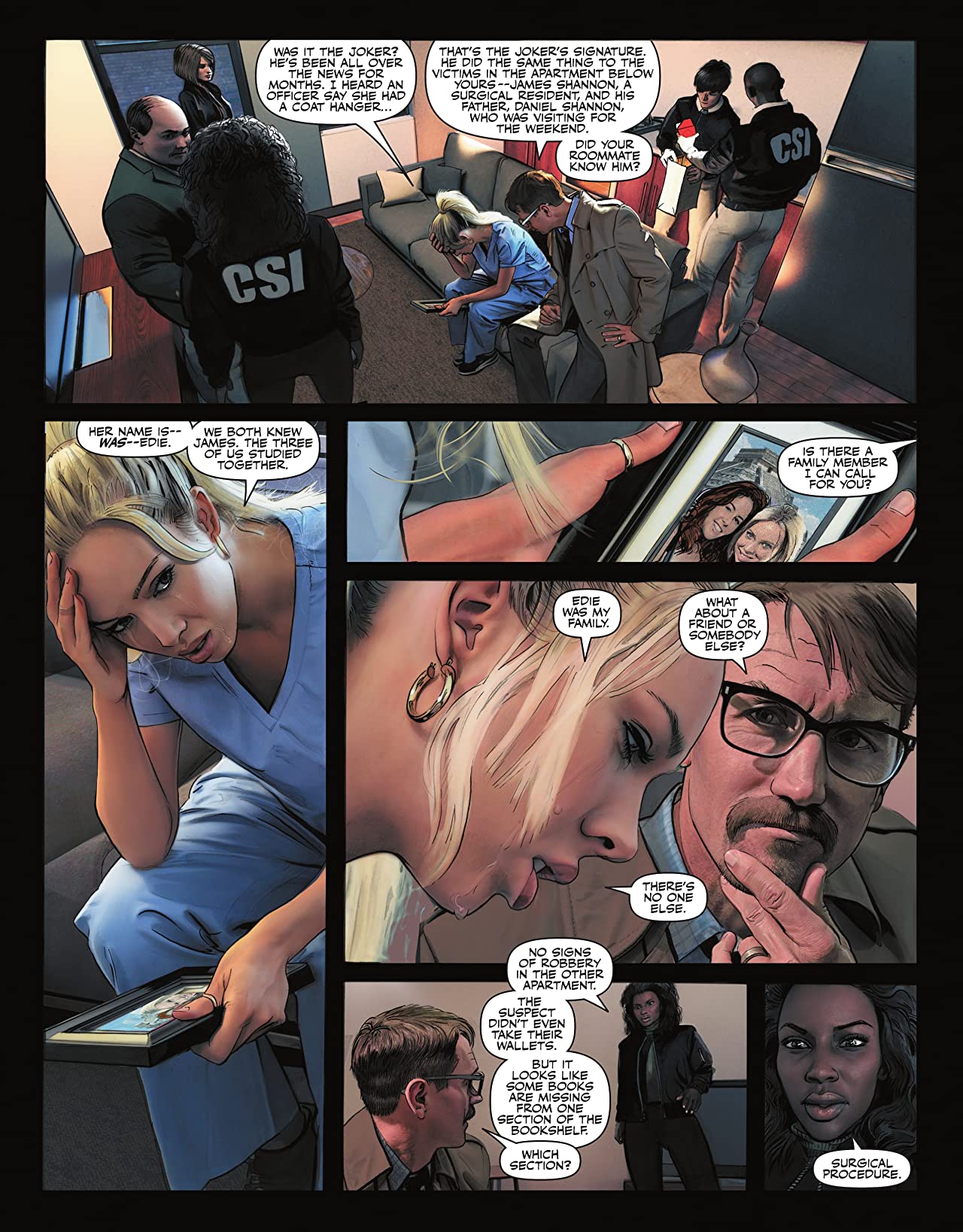
Kami Garcia: I talked to the artists a lot about the story. For example, in the book anything in present-day from Harley's point-of-view is in full color, while any flashbacks and anything taking place elsewhere but not from Harley's persspetive if greytoned with accent colors.
One of the things I noticed early on with Mico is that he does incredible greyscale work. I asked Jim Lee if we could do something like this in Criminal Sanity, and he said it was up to the artist. Mico liked the idea and we went with it.
Mike Mayhew and Jason Badower are both so photorealistic, that it pays out like a movie. Jason took over with the teen Joker progression. I wanted to give the Joker an authentic teen feel, and had lots of movie touchstones. Jason knew just what to do.
Jason was also really interested in depicting the city; he wanted Gotham to feel like a character in itself.
In general, I try to talk to the artists and figure out what they like and try to build that into the overall story. I also make sure to get everything they've done previously.
When breakdowns come in, as part of my notes I try to always mention 'If you have a better idea or a different manner, let me know and I can re-write the dialogue.'
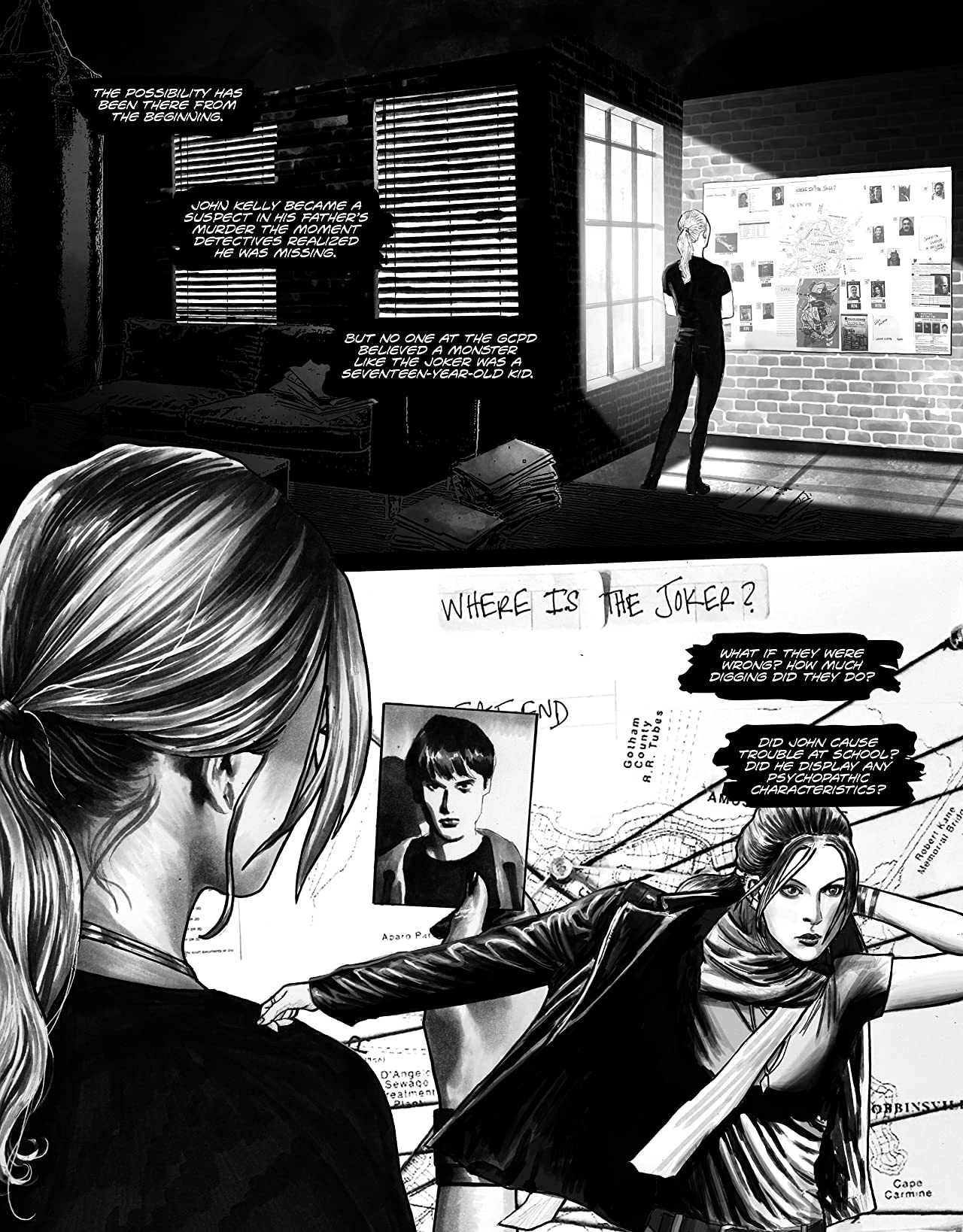
I always say to writers, if your artist is able to feel like a partner in the project, you're going to get the best out of them. Jeff Lemire and Andrea Sorrentino; Brian Michael Bendis and Alex Maleev; I love situations where writers really trusted the artist. In my experience writing the Titans OGNs, I trust Gabriel.
For Criminal Sanity, I leaned on our three main artists and said 'I want you to tell me if I'm getting in the way.' It was tricky as some pages had a lot of procedural crime moments that didn't allow for much elbow room. But wherever possible, I want them to be able to help guide the story and do their best work.
Newsarama: Tell us more about enlisting Dr. Edward Kurz, a real-life profiler, for Joker/Harley: Criminal Sanity.
Kami Garcia: Ed and I worked together. He, and another clinical psychiatrist, consulted on my X-Files book about a serial killer. He loved doing that kind of thing, and I knew he loved comics and pop culture.
I talked to him early on in this, back when it was going to be a teen Joker story asking how does a boy become a monster. One of the things he had said at the time was if you wanted it to be really accurate - if you wanted to work from a forensic standpoint - you need to know who the killer is. If you work from a profile and make sure everything is based on that profile, that's how you can make a killer feel like a real person.

We talked about it, and he wrote the profile - which we included in the pitch for Joker/Harley: Criminal Sanity. When we later pitched the Secret Files one-shot, it was based on that profile with Joker's notebook added in. At the time when I was talking with our editor Kristy Quinn, I pitched that Dr. Krz write all the psychiatrist stuff and I would do all the Joker notebook stories, including the entire house diagrams.
Ed did some cool stuff for Zsasz so you could see what his Arkham write-up would look lik efrom psychiatrsits working with him. He really gets to show of what he does as a professional, and the kind of stuff that would be talked about. If you pulled a person like Zdasz's wrap-sheet, this is the kind of stuff you'd expect.
The other thing we talked about, once I decided to deal with Joker as a present-day adult, he talked me through the evolution of that original teen Joker profile - obviously as an adult killer, but especially as someone who moved on to doing mass murder. Serial killer don't start out in their final form; they eolve. HE walked me through how they'd evolve from their first kill to eight or ten years later when they're good at this. Dr. Kurz was a consultant for the whole series, and he wrote for the Secret Files.

I wanted to make sure that we were creating everything from make-up to costumes and the difference between the Jokers seen in the backstory to all be based on a psychiatrically-accurate evolution of a serial killer. That's how you get something like Hannibal or Silence of the Lambs - an authentic serial killer at work. Ed would look at it and say 'that's a great idea,' and/or point out a killer with this kind of profile wouldn't do this or that with make-up or in terms of a weapon. He would look at the scripts and the art, and if we started to veer away from that profile, he'd always help is get back to that. 'That's great, but ifyou want to go by the profile 100%...' he'd redirect us to make sure we didn't go off by too much. It went into the Joker's behavior as well, whether he would hide, run, or confront somebody. WIth Ed, it's all about him walking me through the psychiatric aspects.
Newsarama: How do you deal with ending each issue on a cliffhanger, and knowing what comes next but not being able to discuss it with anyone until the next issue comes out?
Kami Garcia: It's kind of like a book series. When someone reads the second book in a three-book series, you obviously can't tell them about what's coming; you have to kind of tease them, which I tried to do.

What I tried to do, and what was most important to me, is to deliver on a promise that every issue would get bigger and better. I wanted people to learn something new from each issue, then something new about the thread of the overall story. For me, that was achieved by outlining everything up front and making sure it was going to build in a satisfying way.
Newsarama: That two-month wait between issues - that must have been new, from where you came from.
Kami Garcia: Joker/Harley: Criminal Saniy was originally supposed to come out month, but a lot of things happened when the series was coming together.
I spent a lot of time outling the story, and reading the script aloud. Then when I would get the art, and then the lettered art, I would re-read it through again and again - aloud. Clive Barker once told me the most important thing is to read your words aloud and see how it falls for readers. And for readers, I sometimes have my husband in mind; he's a comics fan, with a short attention span.
So it was tough. I struggled, knowing people would have to wait awhile between issues.
One of the important things was that we had flashback run in every issue of the series, showing the evolution of Joker as a killer; how he went from being a normal teen into this incredible serial killer that manages to elude the authorities in the past and in the present. I felt that was one thing for people to follow.
In the present-day story, there was a new string of murders taking place in Gotham; no material evidence is being recovered, leaving no way to track this killer except with a profile created by Harley, who is a clinical psychologist and behavior analyst.
Newsarama: Kami, Joker/Harley: Criminal Sanity beats your Teen Titans graphic novels to be your longest comic book work to date. What would you say you learned from doing the story?
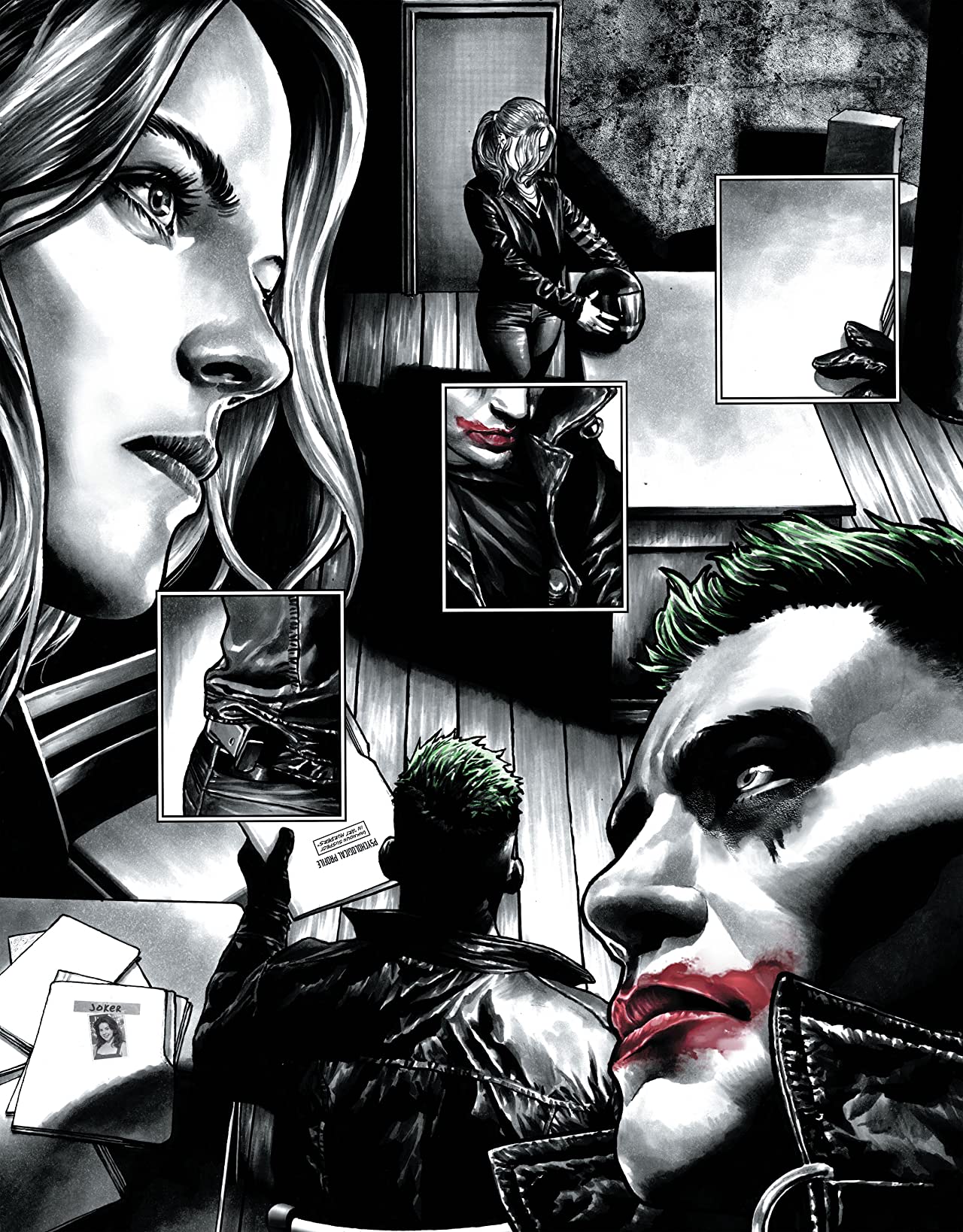
Kami Garcia: Well, Criminal Sanity is obviously really different. The Titans books are graphic novels as opposed to single issues, but overall in comics I get to only write the fun parts, and none of the boring parts.
With Criminal Sanity being a limited series, it almost equates itself to a TV series - you can only watch an episode a week. For me, it was a big learning curve. I don't know how people do it in the main DC books, but with Criminal Sanity we had two months between each issue.
Newsarama: Joker/Harley: Criminal Sanity is definitely your most mature/adult work to date in comics. What do you think of the experience?
Kami Garcia: I really have two speeds. I love doing teen stuff, but with adult stuff I really like to go dark. I originally started at DC with Michelle Wells, and then moved over to Kristy Quinn- she's been my editor from the second issue of Joker/Harley: Criminal Sanity on. She's been great in coordinating with anyone else at DC on what I'm doing. 'Kami has to do this on the Joker, so for the next two weeks she's going to be writing so many pages on the Titans books, then the fifth issue of Joker.' She's regulate my schedule, coordinating chunks of time for each of my DC projects.
Going back and forth between a teen project and a mature project isn't bad, but not in the same day. I could do Joker and Titans in the same day. I don't get stressed out writing dark stories - I thought Joker was fun. It's just that there's different kinds of vibes.
Titans is so funny, sweet, and genuine. It's about found families, and I have such an affection for those characters. But it's a big switch from Joker/Harley: Criminal Sanity.
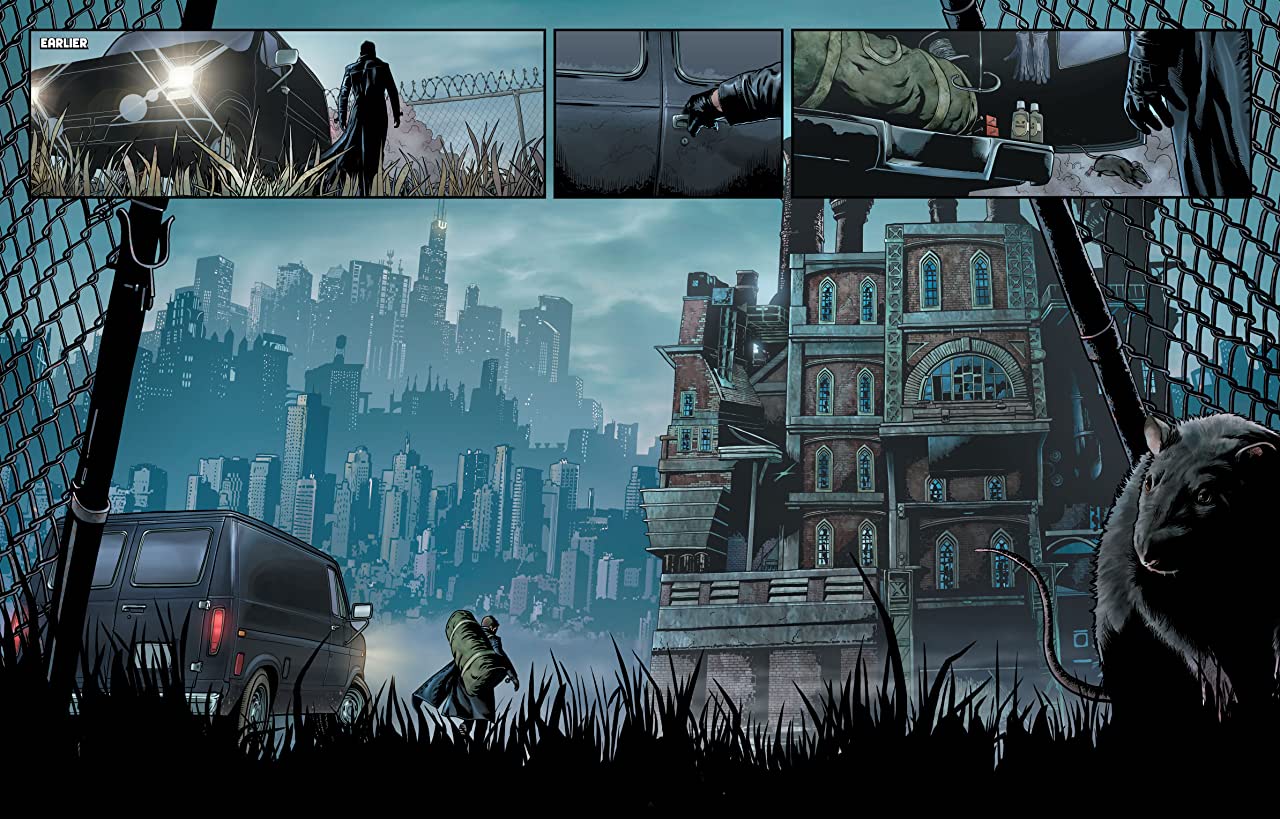
Newsarama: Joker/Harley: Criminal Sanity is out now in a big collection - could you see yourself doing more with these characters?
Kami Garcia: I'm always happy to keep writing.
I wanted Joker/Harley: Criminal Sanity to have an end for her, whether or not I get to write more for the characters. I love to allow readers the opening to use their imagination to see where the story would take her next.
At the end of the day, like most comic creators, if it sells and has lots of readers, sometimes you can do more. If not, I felt like I made Joker/Harley: Criminal Sanity full circle as a series and as a collected edition.
I have ideas. I wouldn't be at a loss. But I didn't want readers to feel like they are being left at a cliffhanger, after hanging with me for all those issues.
Whether you're a fan of the hero or the villain, there's a lot more to read- check our recommended best Harley Quinn stories and the best Joker stories.
Chris Arrant covered comic book news for Newsarama from 2003 to 2022 (and as editor/senior editor from 2015 to 2022) and has also written for USA Today, Life, Entertainment Weekly, Publisher's Weekly, Marvel Entertainment, TOKYOPOP, AdHouse Books, Cartoon Brew, Bleeding Cool, Comic Shop News, and CBR. He is the author of the book Modern: Masters Cliff Chiang, co-authored Art of Spider-Man Classic, and contributed to Dark Horse/Bedside Press' anthology Pros and (Comic) Cons. He has acted as a judge for the Will Eisner Comic Industry Awards, the Harvey Awards, and the Stan Lee Awards. Chris is a member of the American Library Association's Graphic Novel & Comics Round Table. (He/him)



